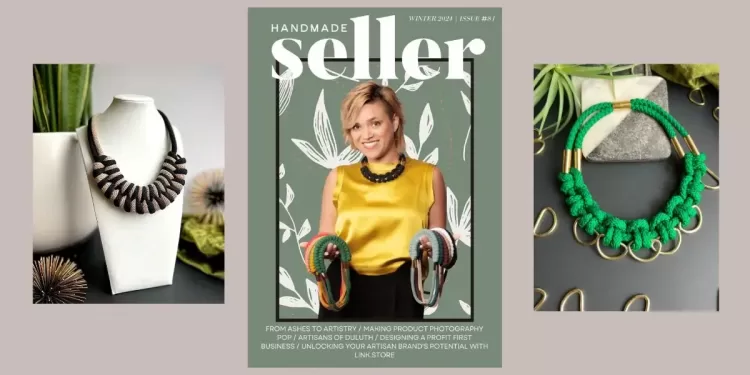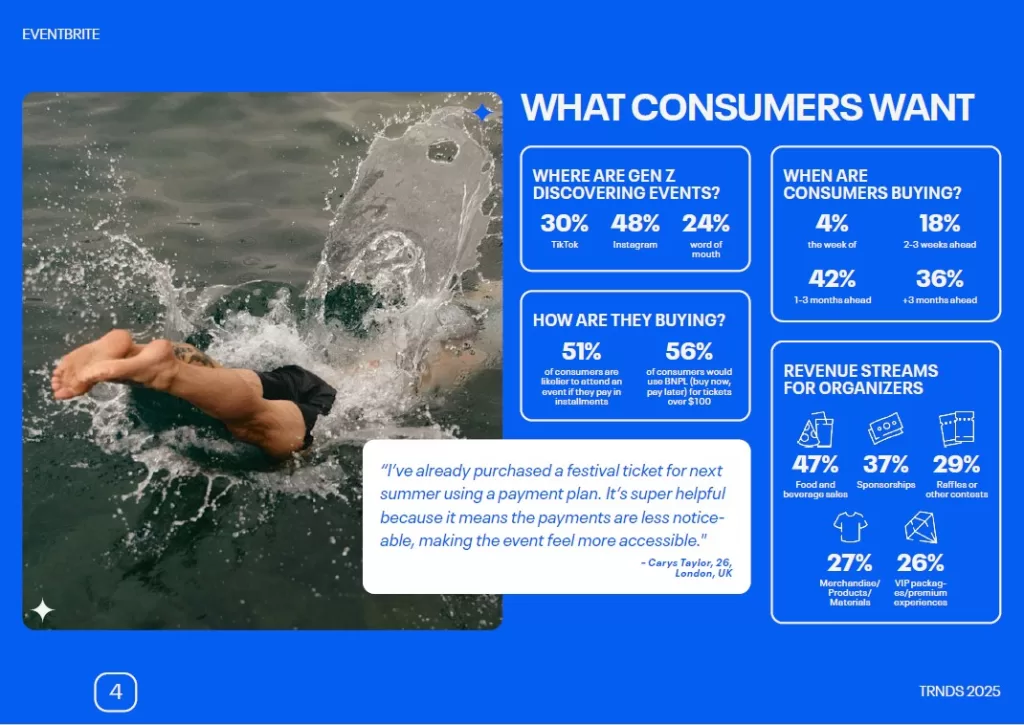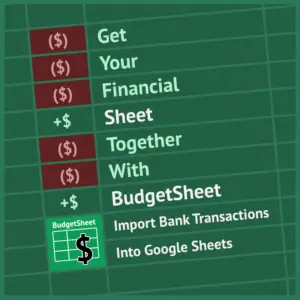Are you running any events, experiences, classes, or communities as part of the revenue streams for your business? Or are you curious how events and communities are changing in 2025 and how you can capitalize on these changes? In light of economic challenges around the world, events can be a great way to put new offerings in front of your customers.
In this article, I will share more about how the events space is changing, as well as the rise of 4th spaces and how this is providing new opportunities. I’ll share insights based on what I have been seeing to give you new ways to think about events this year.
Running classes, events, or experiences for your business can often feel like blindly walking around in the dark. It can be difficult to gather good research on the industry due to its fragmented nature. I’ve started writing more about how these events or experiences can be developed as one of the revenue streams for your business. A lot of this work came from hunting down information, talking to people, and trying to construct a picture of the opportunities that might not otherwise be apparent. For example, many artisans have shared with me how events can be a helpful source of revenue to balance out the ups and downs of product based businesses.
Last summer I wrote about why it might be time to consider Airbnb experiences for your business. With Airbnb working to become the travel planner of choice, being part of their experiences platform may make sense for your business. You can read that article here.
Additionally, another source of information about events has been recently released. The Eventbrite 2025 trends report is now available. It contains many eye-opening statistics. If you have an events or classes component to your business, this report is worth a careful read.
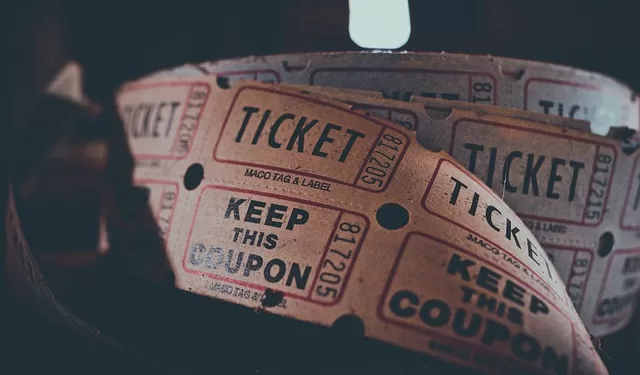
Trends for 2025
Themed events are in
Themed events are growing in popularity, since they can be a convenient way to market to existing fan bases. Using themed events can be a great way to change up an existing class to keep it fresh and attract new audiences. It can also provide activities at reasonable price points for consumers.
“Niche and music inspired events are growing across event categories, from themed spin classes and Sabrina Carpenter pottery classes to Emo Valentine’s nights…… themed nights allow fans to join together without spending hours in an online ticket queue or forking over a huge amount of cash. 64% of organizers believe people will be looking for more niche events in 2025.” -From Eventbrite research report listed above.
All areas are benefiting – even retro events. “Retro-decade events celebrating the 60s, 70s, 80s, and 90s sold 8.5% more paid tickets on Eventbrite in 2024.” Capturing cultural moments can also be a key to success. “Chappell Roan-themed events sold more than 28k paid tickets on Eventbrite in 2024, an increase of +745% year over year.” Cultural moments can be hard to capture, but capitalizing on the right ones can be a winning strategy. If you have existing classes and are looking to expand their markets, choosing to create a niche or music inspired component can be a great way to update them to keep them relevant. -From Eventbrite research report listed above.
Local and community-based events are growing
Micro-events are a great place to start hosting events. They allow you to cap the size to keep a more intimate experience. “As well as giving attendees more space to make connections, micro-events often have lower overheads and upfront costs, meaning organizers can plan more events and experiment with new ideas.” Micro events can be as small as four to six people to keep them manageable.
Micro-events can be a way to provide a more exclusive offering, or can simply make it easier to have spaces to host events. These can be offered more frequently in order to stay in front of your target audience.
Large event organizers are also getting in on the trend, using micro events to leverage and keep community with their audience. “They might be a tenth of the size, but they’ll generate money and have the secondary advantage of keeping you in people’s consciousness. It’s all advertising for your big event.”
At Handmade Seller, I have been experimenting with micro-events as a way to build community. I’ve started with in-person events in Minneapolis and Rochester, MN, but also plan on experimenting with online events. I find my reasons for creating events are very similar to what other event organizers are also sharing. Events are simply another avenue to build community and engagement with your followers.
An evolution and integration of third and fourth spaces
Another trend in the events and community I have been observing is the integration of third and fourth spaces. Before I talk about this integration, let’s define what is meant by third and fourth spaces, so we are using the same terminology.
What is a third space/place?
You will often see the terms spaces and places used interchangeably when you see these defined. Let’s go to a commonly accepted definition from Wikipedia for third places.
“In sociology, the “third place “refers to the social surroundings that are separate from the two usual social environments of home (“first place”) and the workplace (“second place”).” https://en.wikipedia.org/wiki/Third_place
Cafes, coffee shops, some retail spaces, libraries, gyms, breweries are all examples of third spaces. These spaces exhibit a number of common characteristics:
“Open and inviting.
You don’t need an invitation or appointment, and you can come and go as you please.
Comfortable and informal.
You feel that you belong there.
Convenient.
It’s close enough to visit often, ideally right in your own neighborhood.
Unpretentious.
Everyone is on the same level, there’s nothing fancy or fragile, and it’s not expensive.
There are regulars.
And often there’s a host who greets people as they arrive.
Conversation is the main activity.
Discussion, debate, and gossip are part of the mix.
Laughter is frequent.
The mood is light-hearted and playful. Joking and witty banter are encouraged.” https://en.wikipedia.org/wiki/Third_place
Third spaces are unique in that they are always trying to utilize the real estate that they possess in optimal ways. Some third spaces were reliant on existing customers to drive traffic, while others have more flexible models.
During the pandemic, we all experienced a loss of third spaces as so many businesses had to close or were severely limited in their functions due to social distancing requirements. While so many were stuck at home, there was an accelerated adoption of 4th spaces. Fourth spaces existed before the pandemic, but the pandemic brought them directly in front of many more people.
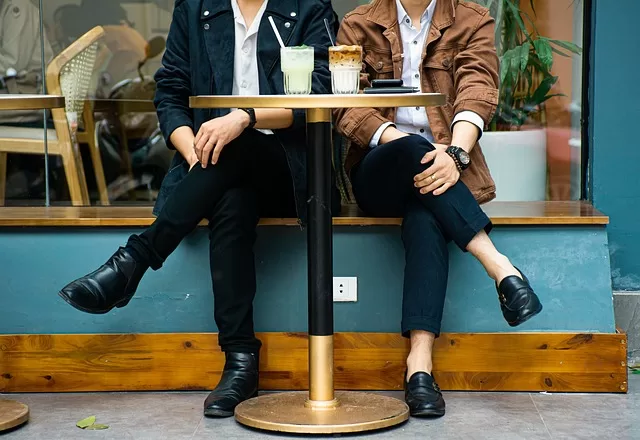
What are fourth places/spaces?
Anthonia Ogundele wrote an insightful piece for Urbanarium about 3rd and 4th spaces highlighting how life changed during COVID. I find this to be one of the most useful definitions I’ve seen of fourth spaces.
“I see the 4th place as the intangible digital environments that have proven to be spaces of connection, or spaces of reprieve from social isolation during this time of COVID. 4th places are those digital communities that we are a part of or the platforms we depend on and facilitate human connection. In fact, the 4th place layers over the 1st, 2nd and 3rd place, but still maintains its own unique identity: it is an intersection.” https://urbanarium.org/journal/fourth-place-and-re-imagining-city
These digital communities arose in so many areas. If you can name the space, you could probably find a community for it. Online book clubs or craft groups were early adopters of fourth spaces. Any of these sound familiar?
How third and fourth spaces are blending together
You might be thinking “Online communities have been around a while, what’s really different? Isn’t this just semantics for marketing’s sake?”
We are continuing to see a blending of third and fourth spaces as physical spaces face continued economic challenges. And it is coming from evolution in philosophy from both 3rd and 4th spaces. This is where the changes are coming and opportunities abound. How about an example?
In the craft industry, we are used to seeing more traditional models, such as the local yarn store that ran events and classes as a way to attract new customers. At that time everything revolved around bringing people into the store – that 3rd space. But now we have ecommerce providing plenty of additional opportunities to buy. We see that same yarn store approaching its customers more as a community and hosting events in other places. A local yarn store I shop at is a great example of this. Check out Amazing Threads if you want to get an idea of how this works.
They run online gatherings, run classes at their store, and run a stitch night at a local brewery OMNI brewing. This is a great example of the blending of 3rd and 4th spaces. If you run events, retailers that are looking to transform into these new models are great candidates to explore launching events with. Your classes can help that retailer expand into other areas. The retailer has a new offering to put in front of their customers, and you have a built in customer base for collaborating. It’s a great win-win for both businesses.
We are also seeing online communities shift into physical spaces that grow out of events. A great example here is the non-profit Shut up and Write. While the organization started many years ago as in person events, it steadily built up a community of writers. The core premise of a shut up and write event is the same. Once you understand the structure, you can go to any of the events they host and feel like you fit in. You can hop into digital communities, or go in person- whatever meets your needs as a writer. Shut up and write brings its communities to 3rd spaces, providing valuable revenue sources or utilization for those 3rd spaces.
Hosting events can allow you to build the community you want. The growth of events is leading people to joining communities. This is really giving communities multiple ways to grow- whether it is online, hybrid, or in person. Gen Z is leading this charge by their use of TikTok as a search engine to discover new events. Traditionally someone used to find you, sign up for your email, and be marketed to for events. While that traditional funnel still exists in some areas, TikTok as a search engine for events really changes that traditional model.
Why is 2025 the year this change will accelerate?
There are several factors that are all converging to create a perfect opportunity storm for you.
- People are yearning for connection. They are longing to feel seen and to feel safe. Many are wanting in-person connection as well as online options. This is leading many communities to adopt both digital and physical components to their models.
- The tools that facilitate connection and community are evolving to meet more modern needs for both buyers and sellers. It’s getting easier to manage events.
For sellers:
The business models of the providers of the tools are also evolving and providing more flexible solutions. Tools like Eventbrite that help manage ticketing have been designed with flexible payment models. Now both consumption pricing models (where you only pay if you sell something) as well as more traditional subscription models (for those that are running larger events) co-exist. This makes it easy for the entry level event planner to get started utilizing tools and expanding their reach.
Platforms are increasingly integrating with social media platforms to post events and sell tickets. Eventbrite has rolled out integration that allows you to post events and sell tickets through TikTok videos. This reduces friction for the customer.
For buyers:
Financing options like buy now pay later (BNPL) make more expensive purchases manageable and affordable. This allows for purchasing items several months in advance and paying for them over time.
The ability to buy tickets directly through other platforms such as TikTok or Facebook is making it easier than ever to purchase. Integrations with payment providers offering Apple Pay or Google pay make it really easy to hit that purchase button for impulse event purchases.
- Third spaces are looking to drive traffic in more affordable ways. Third spaces have unique challenges. It’s no secret that the cost of advertising continues to rise on all platforms. Each type of third space has a different funding model: Taxpayer (i.e. libraries), subscription (i.e. gyms), or customer (cafes).
Customer funded third spaces are often looking for affordable ways to drive traffic to their establishment. This makes them great locations for hybrid events or places to bring the community together. It creates a unique win-win for the hybrid community and the third space. The constant cost pressure of businesses makes it harder and harder to go it alone. Partnering with others and creating win-win revenue models results in a more engaged audience and helps meet a diverse set of needs for the retailer.
Thanks for joining me for the first part of my series on the rise of fourth spaces.
In the second part in our series, I will share more information about the tools that you can use to manage events for your business.
Interested in a subscription to the magazine?
Our subscribers are what makes it possible for us make some articles available for free. We’ve recently expanded our subscription options to give a lot more subscription flexibility. Learn more here about our options for subscriptions! We also support multiple local currencies for subscriptions. Plus, we plant a tree for every subscriber, so you can feel good about your impact.
